
Home care: Laundry & Cleaning
Skin care
peer-reviewed
Now and Beyond: The Top Trends Shaping the Laundry and Cleaning Market
MAGDA STARULA
Consultant – Home Care & Health, Euromonitor International, Düsseldorf, Germany
ABSTRACT: The home care market is constantly evolving due to changing consumer needs and interests. Consumers are paying attention not only to the price and effectiveness of a product, but also to its composition, eco-friendliness, and even its packaging. This report examines the relationship between consumers’ changing demands, driven by technological advancements, environmental awareness, and the growing focus on wellness and self-care, and the potential impact on the home care industry in the years to come.
??????????????????
“
“A study in healthy women providing probiotic yogurt for four weeks showed an improvement in emotional responses as measured by brain scans”
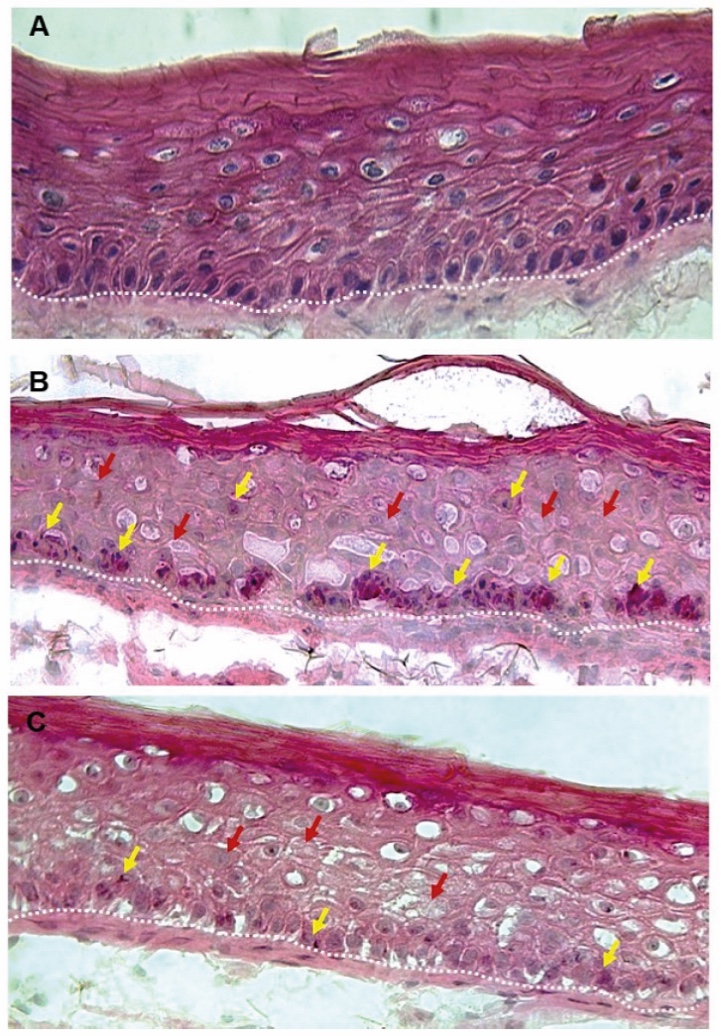
Figure 1. Skin Section with Microbiome. Most microorganisms live in the superficial layers of the stratum corneum and in the upper parts of the hair follicles. Some reside in the deeper areas of the hair follicles and are beyond the reach of ordinary disinfection procedures. There bacteria are a reservoir for recolonization after the surface bacteria are removed.
Materials and methods
Studies of major depressive disorder have been correlated with reduced Lactobacillus and Bifidobacteria and symptom severity has been correlated to changes in Firmicutes, Actinobacteria, and Bacteriodes. Gut microbiota that contain more butyrate producers have been correlated with improved quality of life (1).
A study in healthy women providing probiotic yogurt for four weeks showed an improvement in emotional responses as measured by brain scans (2). A subsequent study by Mohammadi et al. (3) investigated the impacts of probiotic yogurt and probiotic capsules over 6 weeks and found a significant improvement in depression-anxiety-stress scores in subjects taking the specific strains of probiotics contained in the yogurt or capsules. Other studies with probiotics have indicated improvements in depression scores, anxiety, postpartum depression and mood rating in an elderly population (4-7).
Other studies have indicated a benefit of probiotic supplementation in alleviating symptoms of stress. In particular, researchers have looked at stress in students as they prepared for exams, while also evaluating other health indicators such as flu and cold symptoms (1). In healthy people, there is an indication that probiotic supplementation may help to maintain memory function under conditions of acute stress.
From scrub to smart: The tech evolution of cleaning
Smart home solutions are changing the way consumers buy and use home care products. Innovations such as auto-dosing, robotic cleaners and connected devices that optimise performance and reduce waste are making this possible. Features such as direct-to-consumer subscriptions, refill alerts and automated reordering are enabling brands to create seamless, tech-driven experiences.
The growing popularity of smart homes is fuelling demand for intelligent, compatible cleaning solutions that work with AI, robotics and automation.
Cleaning solutions that utilise AI, robotics and automation. Personalised, sensor- driven cleaning requires highly efficient, concentrated products, and connected appliances and robotic cleaners are changing how consumers engage with brands in this industry.
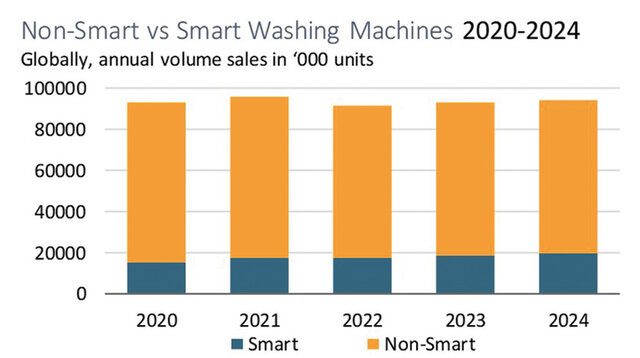
Source: Consumer Appliances 2025 edition: Smart appliances in 46 select markets
Personalised home solutions are becoming the norm, with smart systems that adjust cleaning routines based on users' preferences, allergies and fabric sensitivities. AI-driven recommendations can be used to tailor detergent types, fragrance levels and cleaning intensity, creating opportunities for mix-and-match or on-demand formulations. Smart sensors embedded in appliances can detect dirt, humidity and air quality, triggering precise cleaning actions. This shift requires ultra-efficient, sensor-compatible formulations, as well as concentrated, mess-free products that are designed for automated dispensing.
AI-powered smart homes integrate appliances seamlessly, optimising the usage of detergents and cleaning products based on real-time data. Connected washing machines, robotic vacuums and dishwashers can automatically reorder supplies, thereby influencing consumption patterns and brand loyalty.
Beyond laundry, the robotic floor cleaning market is experiencing significant growth and is currently still predominantly attracting younger consumers. Making this technology more appealing to the over-65s, who will account for 9% of the global population by 2030 (a considerably higher proportion in most developed countries), represents a significant opportunity. Driven by innovation in smart navigation and AI, homes will evolve to accommodate robotic companions that integrate seamlessly into daily life (1).
Cool and quick: A wash cycle revolution
Quick and cold wash cycles are transforming laundry and dishwashing care by reducing energy usage and saving time without compromising cleaning performance. This trend is driving innovation in enzyme-based detergents and appliance technology that is optimised for fast, low-temperature cleaning.
The trend towards cold and quick washes in laundry signifies a growing consumer preference for shorter cycles at lower temperatures. This shift is driven by a combination of factors, including changing lifestyles, increased environmental awareness, rising energy costs, and the development of detergents and washing machines that are optimised for these conditions.
Legislation in regions such as the EU is also playing a role by mandating energy-efficient appliance features, including eco-cycles that often operate at lower temperatures. Consumers are increasingly recognising that cold and quick washes can save energy — and therefore money — while being gentler on clothes and helping them last longer.
The preference for short cycles has been heightened by the post-pandemic return to the office, which has reduced the time available for chores. This shift in lifestyles has led to a preference for shorter and often colder wash cycles, as consumers again prioritise immediacy. However, this growing preference for quick/cold washing has exacerbated hygiene concerns, particularly with regard to odours. This is due to a combination of factors, including rapid, low-temperature washes, the increased use of liquid detergents, and the popularity of polyester fabrics, which often result in dissatisfaction with laundry performance.
The reduction in temperature and time means that the chemical and mechanical components of the laundry process must do most of the work. Today, many consumers use short cycles for purposes other than refreshing lightly soiled garments, highlighting the need for further consumer education.
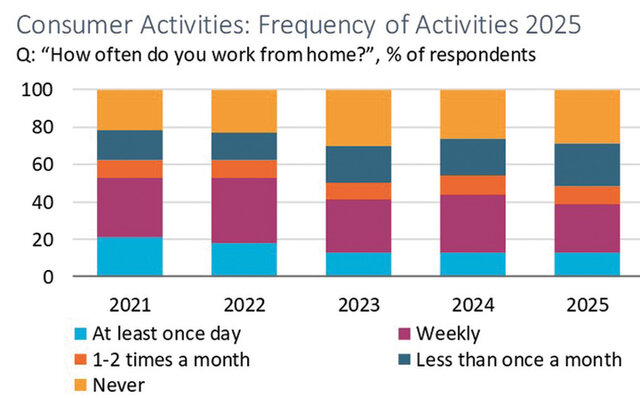
Source: Euromonitor International Voice of the Consumer: Lifestyle Survey, fielded Jan-Feb 2025 (n=40,337)
The mindful clean: Wellness-driven cleaning solutions rise
The growing significance of the home as a sanctuary for emotional well-being and self-care, driven by the desire for comfort and stress relief, is the primary force shaping the self-care trend within the home care sector. The emotional connection to living spaces is influencing consumer demand for products that go beyond basic cleanliness.
The home care industry, which is based on the use of chemicals, has a long history of bans on certain substances. While some chemicals that are linked to endocrine and hormonal disruption, respiratory problems, skin irritation and even cancer have been banned or restricted in various countries due to health risks, many are still not prohibited worldwide, although further regulatory action is likely (2).
There is a growing preference for natural ingredients, and increased interest in hormone health and its links to lifestyle and wellbeing. This creates significant opportunities for brands to innovate and market home care solutions that actively promote health and wellbeing, either by excluding harmful ingredients or by introducing beneficial ones, such as air fresheners with calming aromatherapy benefits or cleaning products with soothing scents.
Neglecting this evolving consumer priority could cause the industry to lose relevance and market share to competitors who successfully integrate wellbeing into their home care offerings. This signifies that acknowledging and catering to the home's role as a sanctuary is increasingly crucial for sustained growth.
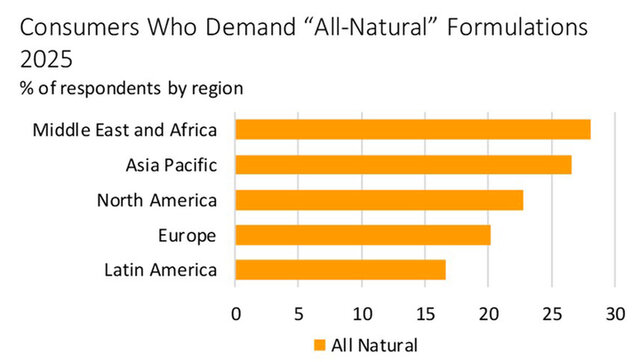
Source: Euromonitor International Voice of the Consumer: Lifestyle Survey, fielded Jan-Feb 2025 (n=40,337)
Conclusion
Understanding consumer behaviour is key to preparing for a smarter, more personalised future of home automation. The growing prioritisation of wellness among consumers is driving increased spending on self-care. To capitalise on this trend, businesses should strengthen their wellness appeal by linking functional ingredients to broader health benefits and securing certifications to enhance their credibility. In anticipation of the rise of smart homes and personalised cleaning, detergent brands should invest in R&D to create formulations that are optimised for AI and compatible with sensors.
Conclusion
The future of cosmetics lies in the continued evolution of holistic approaches which represents a transformative shift in the industry, merging scientific advancements, natural ingredients, and wellness principles. By understanding and embracing the interconnectedness of these elements, the cosmetics industry can cultivate products that not only enhance external beauty but also contribute to the overall well-being of individuals and the planet.
The interplay between beauty from within and topical cosmetics is the key for future products. The integration of biotechnology and green chemistry is revolutionizing cosmetic formulations, offering sustainable and biocompatible alternatives.
Developers can implement blockchain to trace the journey of ingredients from source to product. Nevertheless, the efficacy of the natural products should be scientifically proven. Marketers can communicate transparency as a brand value, and parallelly educate consumers by highlighting how specific ingredients contribute to radiant and healthy skin.
By embracing the synergy between these approaches and leveraging scientific advancements, the cosmetics industry can provide consumers with comprehensive beauty solutions that cater to both internal and external dimensions of beauty.
Surfactant Applications
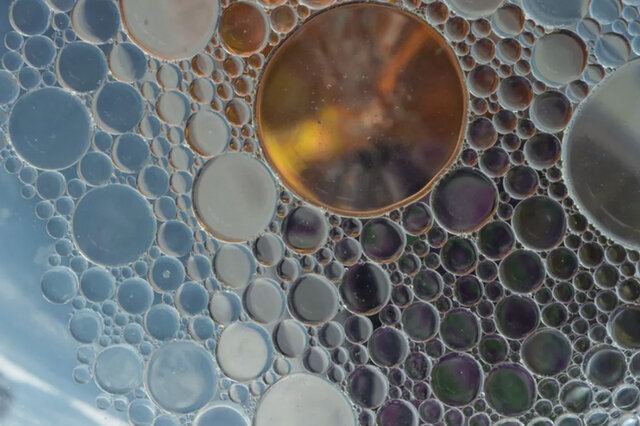
The application area lends itself particularly well to the use of AI. Active today in this area is the US company Potion AI (6). The company provides AI-powered formulation tools for beauty and personal care R&D. Their offerings include Potion GPT, next generation ingredient and formula databases and AI document processing. Potion’s work could have a significant impact on the entire surfactant value chain, from raw material suppliers to end consumers. By using their GPT technology, they can help target work toward novel surfactant molecules that have optimal properties for specific applications. By using their ingredient and formula databases, they can access and analyze a vast amount of data on surfactant performance, safety, and sustainability. By using their AI document processing, they can extract and organize relevant information from patents, scientific papers, and regulatory documents. These capabilities could enable Potion AI's customers to design and optimize surfactant formulations that are more effective, eco-friendly, and cost-efficient. A particularly interesting application for this type of capability is deformulation.
Deformulation is the process of reverse engineering a product's formulation by identifying and quantifying its ingredients. Deformulation can be used for various purposes, such as quality control, competitive analysis, patent infringement, or product improvement. However, deformulation can be challenging, time-consuming, and costly, as it requires sophisticated analytical techniques, expert knowledge, and access to large databases of ingredients and formulas.
AI can potentially enhance and simplify the deformulation process by using data-driven methods to infer the composition and structure of a product from its properties and performance. For example, AI can use machine learning to learn the relationships between ingredients and their effects on the product's characteristics, such as color, texture, fragrance, stability, or efficacy. AI can also use natural language processing to extract and analyze information from various sources, such as labels, patents, literature, or online reviews, to identify the possible ingredients and their concentrations in a product.
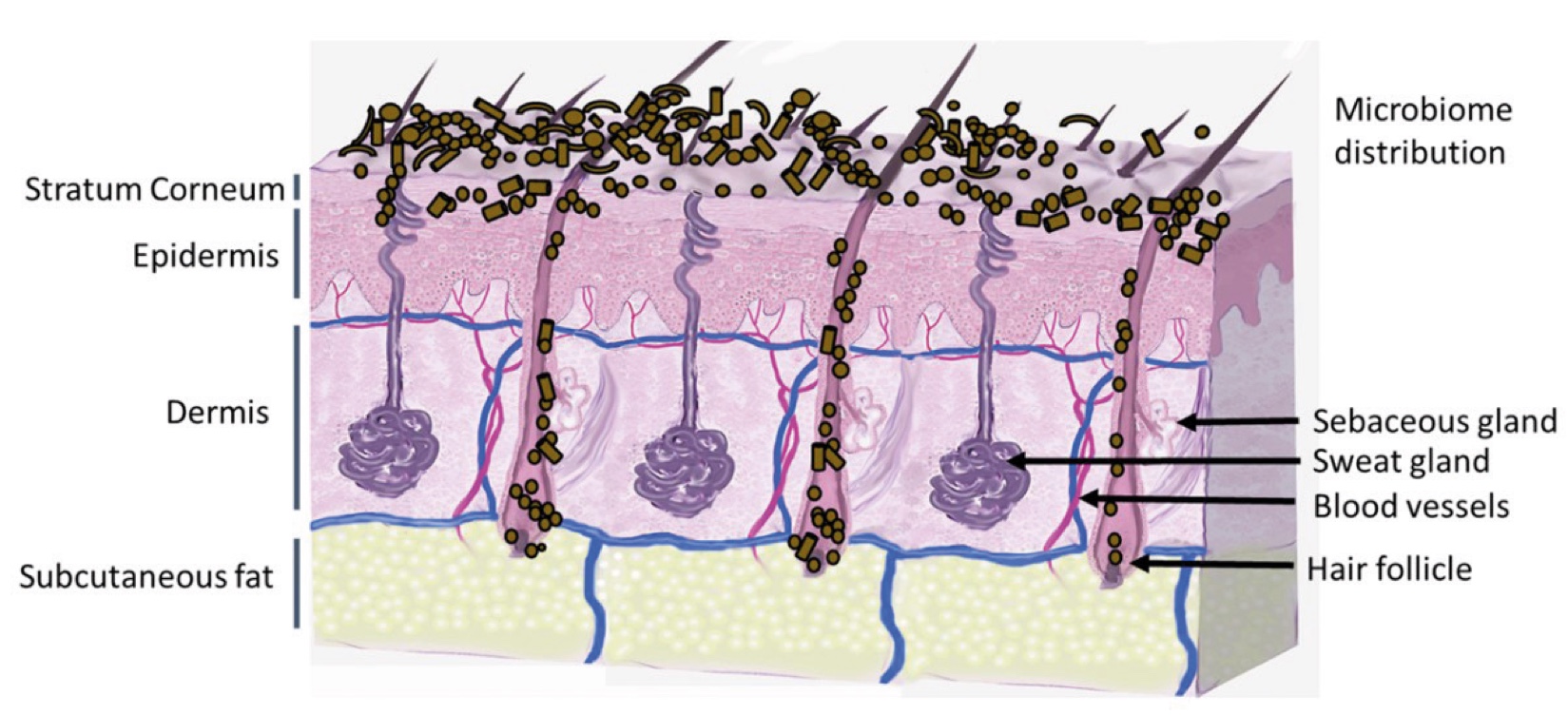
Figure 2. Skin Section with Microbiome. Most microorganisms live in the superficial layers of the stratum corneum and in the upper parts of the hair follicles. Some reside in the deeper areas of the hair follicles and are beyond the reach of ordinary disinfection procedures. There bacteria are a reservoir for recolonization after the surface bacteria are removed.
